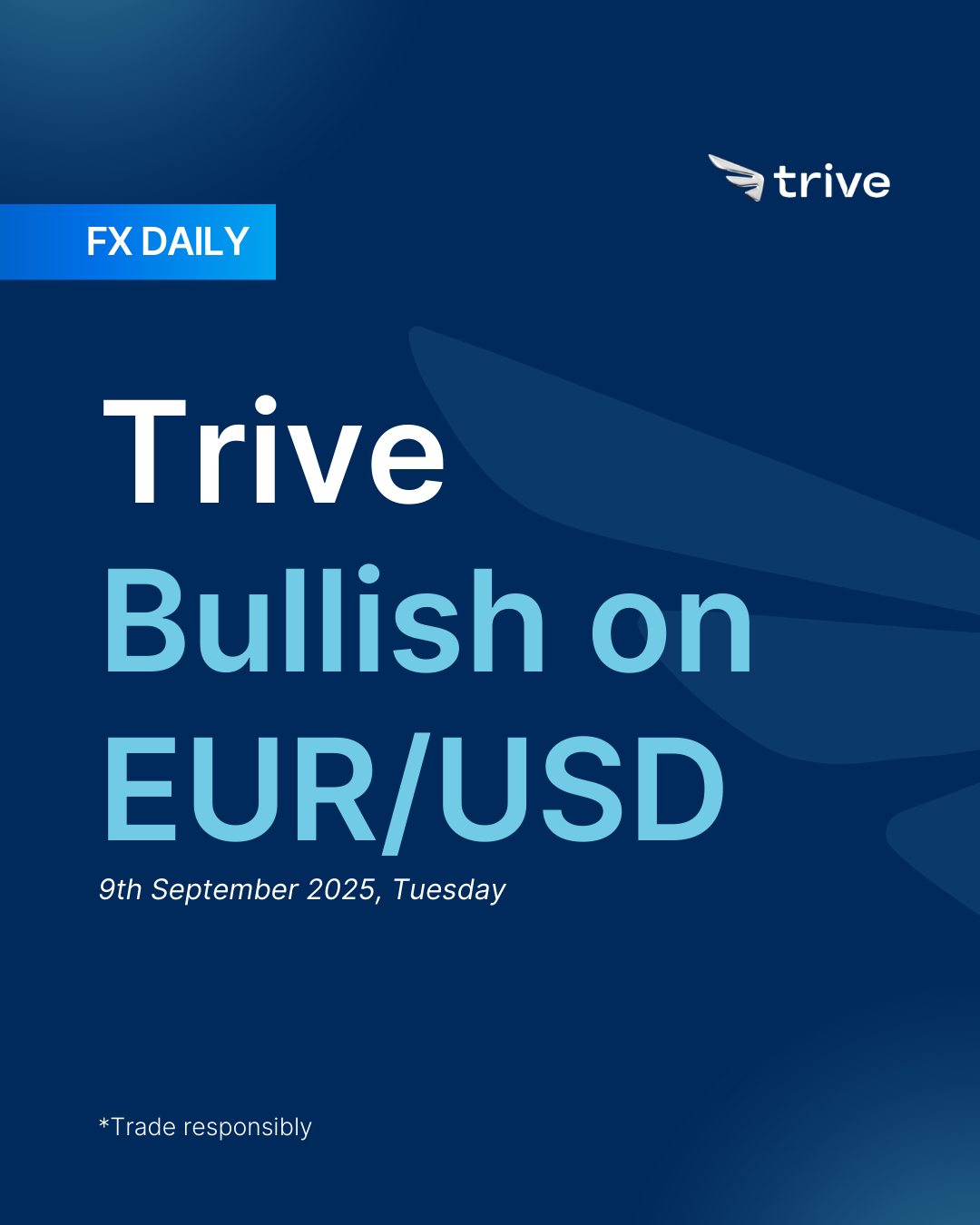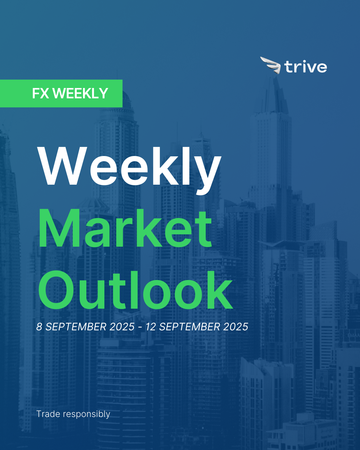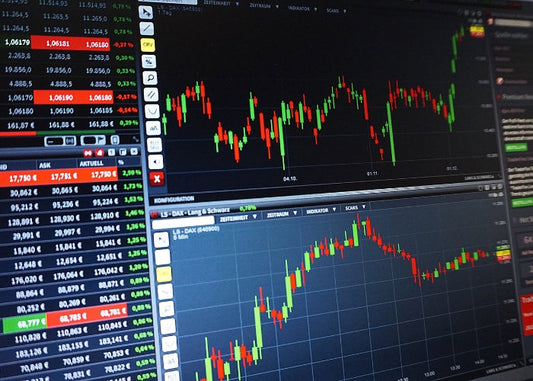FX Daily: Trive Bullish on EUR/USD

The euro rallied mainly on USD weakness after a disastrous US jobs report forced markets to price aggressive Fed cuts, lifting EUR/USD above 1.1743 toward 1.1800. Eurozone data remain sluggish and ECB is expected to hold, but a strong current account and narrowing rate differentials support resilience. We stay bullish near term, favoring buying pullbacks as French political risks stabilize and the USD remains under pressure.
EUR: ECB expect to on hold this week
The Euro ended the week higher, not because of its own strength, but as the main beneficiary of the sharp collapse in the US dollar. For most of the week, EUR/USD was on the defensive, struggling to stay above 1.1700 and repeatedly pushed lower by broad dollar strength and growing concerns over political instability in France. Mixed commentary from ECB officials, with hawks and doves pulling in opposite directions, left the currency without a clear policy anchor. The picture changed entirely on Friday after the disastrous US jobs report. The sharp repricing of Fed rate cut expectations triggered a powerful dollar sell-off, sending EUR/USD surging through the August high of 1.1743 and toward the 1.1800 level. The Euro closed the week with significant gains, though major domestic political risks remain in focus.
Economic data from the Eurozone had little impact on sentiment. The flash August HICP report showed headline inflation ticking slightly higher to 2.1% year-on-year compared to 2.0% expected. However, with super-core inflation unchanged and services inflation easing, markets viewed the report as insignificant for the upcoming ECB meeting. Final August PMI data confirmed sluggish growth, with the Composite PMI revised slightly lower to 51.0, pointing to a painfully slow pace of expansion. This was reinforced by July retail sales, which fell 0.5% month-on-month, weaker than expected.
ECB officials remained divided. Hawkish voices such as Isabel Schnabel argued that policy rates were already only mildly accommodative and saw no justification for further cuts. In contrast, doves like Olli Rehn and Gediminas Simkus pointed to downside inflation risks, with Simkus suggesting that a December rate cut could be considered. The split in views, combined with underwhelming data, left markets confident that the ECB will keep rates unchanged at its September 11 meeting. A hold is priced at over 99%, while the odds of a cut by year-end remain low at around 30%.
Politics in France continued to weigh heavily on sentiment. A looming vote of no confidence in Prime Minister Bayrou, scheduled for September 8, dominated discussions. President Lagarde commented earlier in the week that she was watching French bond spreads closely. The OAT-Bund spread stayed steady around 77–80 basis points during the week, but traders warned it could widen toward the 2024 peak near 90 basis points if the fallout from the vote is severe.
Market sentiment for the Euro was dictated almost entirely by movements in the US dollar and global risk appetite. Early in the week, the Euro sold off in line with a global risk-off mood driven by surging bond yields and broad dollar strength. The sharp rally late Friday was a direct response to the weak US payrolls report, which reinforced the bearish US narrative. EUR/USD became the primary vehicle for expressing a negative view on the US economy, leading to a rally that was disconnected from any improvement in Eurozone fundamentals.
Near term, we’re weak bullish. The euro benefits from the sharp swing lower in the US policy path, and while Eurozone data are still mixed and politics in France remain a headline risk, the broader setup now provides a mild tailwind for the single currency as a whole, since an easier global rates backdrop and a solid external balance cushion dips, even if domestic momentum is only creeping forward; we lean to buying pullbacks across the euro basket rather than chasing strength, and we gain confidence as French spreads stop widening, euro volatility calms, and equity and credit tone in France stabilizes, because that would tell us the risk premium is being priced out and that rallies can hold for longer.
Longer term we’re bullish. As the year progresses we expect interest rate differentials to compress with the Fed easing while the ECB is patient, real incomes in Europe continue a slow recovery, the current account surplus stays supportive, and the energy backdrop remains more stable than last year, which together argue for the euro to advance in a steady, uneven climb rather than a straight line; we keep a buy on dips mindset across the currency complex and allow positions to work when the data path is consistent with softening inflation and a gradual improvement in growth.
However, if Eurozone growth cools again or political risks flare just as global data firm elsewhere, the euro could stall and trade heavy with rebounds that fade sooner, and if the ECB this week adopts a more dovish tone than markets expect, we will reconsider this stance and lean toward a weaker euro until the data and spreads argue otherwise.
USD: 25bp cut is fully priced in
The US Dollar ended the week sharply lower, driven by a consistent and intensifying narrative of a cooling labor market in the United States. The DXY started the week on mixed ground, finding some support from a global risk-off move caused by surging bond yields. However, the focus quickly shifted to domestic economic conditions. A series of weak labor market reports, beginning with Wednesday’s disappointing JOLTS data and followed by Thursday’s surprisingly low ADP employment figures, set a bearish tone. This narrative culminated on Friday with a disastrous August Non-Farm Payrolls report. The headline figure of only 22k jobs shattered expectations, confirmed a rapid slowdown in hiring, and pushed the dollar to a weekly low below 97.55. This outcome led to a significant dovish repricing of Federal Reserve expectations, with markets aggressively pricing in multiple rate cuts by the end of the year, capping a week where recession fears firmly took hold.
The dollar’s sell-off was primarily driven by collapsing labor market data. It began with July JOLTS Job Openings, which fell to 7.181 million compared to the expected 7.378 million. The August ADP National Employment report then showed just 54k jobs added against 65k expected, while weekly initial jobless claims rose to 237k. The main event came on Friday with the August Non-Farm Payrolls, which confirmed the market’s worst fears. Payrolls grew by only 22k compared to the expected 75k, and prior months were revised down by a net 21k. The unemployment rate rose to 4.3% as forecasted, and average hourly earnings increased 3.7% year-on-year, in line with expectations. Importantly, payroll growth has now been below the estimated breakeven rate in three of the last four months.
Other economic data added to the pressure. The ISM Manufacturing PMI remained in contraction at 48.7, while the ISM Services PMI beat expectations at 52.0, showing resilience in services. However, the employment sub-component of the services report remained weak at 46.5, aligning with the broader labor market slowdown. The July international trade deficit widened sharply to -$78.3 billion, hinting at a potential drag on third-quarter GDP, while revised second-quarter unit labor costs came in softer than expected at 1.0%, which was viewed as dovish for inflation.
Federal Reserve officials also signaled a shift in tone. Governor Waller said the Fed should cut rates at the next meeting and suggested around 150 basis points of cuts would be needed to reach a neutral policy stance. Musalem noted he had marked up labor market risks and marked down inflation risks, while New York Fed President Williams acknowledged the Fed’s focus had tilted more towards its employment mandate. Markets aggressively repriced Fed expectations following the weak payrolls, fully pricing in a 25 basis point cut for the September 17 meeting. By the end of the week, markets were pricing around 70 basis points of total easing by year-end, implying a high probability of three cuts in 2025. Adding to the uncertainty, reports emerged that the Justice Department had opened a criminal investigation into Fed Governor Cook regarding mortgage fraud, creating another layer of political risk for the central bank.
In trade and geopolitics, a US Appeals Court ruled that the majority of President Trump’s tariffs were illegal. Although the tariffs remain in place pending a Supreme Court appeal, the ruling creates long-term fiscal uncertainty as it raises the possibility of refunding collected duties. President Trump also signed an executive order lowering tariffs on Japanese auto imports, easing tensions with Japan. Meanwhile, the US Commerce Department revoked TSMC’s waiver for shipments of chip supplies to China, escalating the ongoing technology rivalry.
Market sentiment shifted notably during the week. It began with global risk aversion, sparked by surging bond yields, including UK 30-year yields hitting a 27-year high. Initially, the dollar benefited from safe-haven flows, but once the weak US data took center stage, the narrative shifted to a US-specific slowdown. Friday’s disastrous jobs report cemented this shift, removing doubts and reinforcing the view that the labor market is deteriorating rapidly. This triggered a broad move across markets, with bond yields and the dollar falling sharply while rate cut expectations surged.
Near term, we hold a clear bearish US dollar stance and continue to sell strength, because a run of softer labor data that started with weaker job openings and ADP, moved through higher jobless claims, and ended with a very small payroll gain has pushed the Fed’s focus toward employment and made a September cut feel like the base case rather than a debate, which in turn keeps front end yields heavy and makes any bounce in the dollar hard to sustain for long. The macro mix around that story still leans the same way, since manufacturing remains in contraction while services holds up but shows weak hiring, unit labor costs eased rather than accelerated, and the trade deficit widened in a way that argues for slower growth, so taken together the data and the Fed’s tone reinforce an easing path that favors fading dollar rallies rather than chasing them higher unless the next round of CPI, wage growth, or PMIs meaningfully challenges that view and shifts rate expectations back toward a firmer stance.
Longer term, we keep a gradual dollar softening bias as interest rate differentials compress and the idea of US outperformance cools, while trade and technology policy headlines add some inflation risk at the edges but tend to weigh more on growth and business confidence, which markets still translate into easier policy at the front and a steeper curve that usually caps the upside in the currency. That setup argues for sticking with a sell the rallies approach while acknowledging that headline risk around Fed governance and trade will keep day to day swings lively, so we stay flexible on timing and sizing but keep the core view that the dollar should drift lower over the coming months unless the inflation side of the mandate reasserts itself in a sustained way.
If a short run of firmer data steadies the labor picture just as growth outside the United States cools and the Fed hints at fewer cuts than priced, the dollar could find a floor, with rebounds that last longer and pullbacks that stay shallow.

EUR/USD 4H
Disclaimer
This material is provided for informational purposes only and does not constitute financial, investment, or other advice. The opinions expressed in this material are those of the author and do not necessarily reflect the views of Trive International. No opinion contained in this material constitutes a recommendation by Trive International or its author regarding any particular investment, transaction, or investment strategy. This material should not be relied upon in making any investment decision.
The information provided does not consider the individual investment objectives, financial situation, or needs of any specific investor. Investors should seek independent financial advice tailored to their individual circumstances before making any investment decisions. Trive International shall not be liable for any loss, damage, or injury arising directly or indirectly from the use of this information or from any action or decision taken as a result of using this material.
Trive International may or may not have a financial interest in the companies or securities mentioned. The value of investments may fluctuate, and investors may not get back the amount they originally invested. Past performance is not indicative of future results.
For more information about Trive International, please visit http://trive.com/int
Additional Information
Investing involves risk, including the potential loss of principal. Diversification and asset allocation strategies do not ensure a profit or guarantee against loss. The content in this material is subject to change without notice and may become outdated or inaccurate over time. Trive International does not undertake any obligation to update the information in this material.
By accessing this material, you acknowledge and agree to the terms of this disclaimer. If you do not agree with these terms, please refrain from using this information.
No comments
Home
Trive
TriveHub





0 comments